|
|
 |
Canadian Historic Sites: Occasional Papers in Archaeology and History No. 22
Spode/Copeland Transfer-Printed Patterns Found at 20 Hudson's Bay Company Sites
by Lynne Sussman
The Catalogue
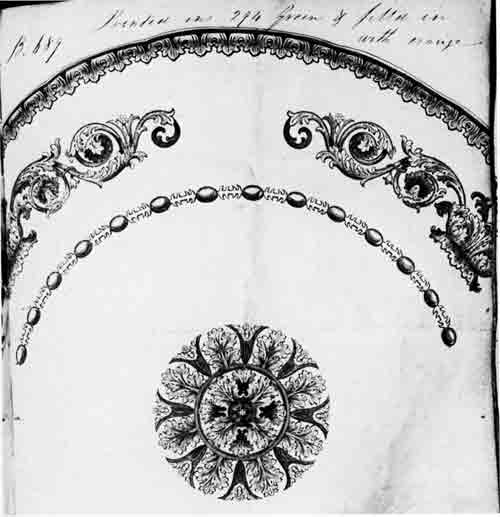
54 Athenian (ca. 1837—?). Earliest pattern number is
B689. Only one excavated example has been found to date and although the
mark on this fragmentary object is not known, the fabric and style of
printing are characteristic of the Copeland and Garrett period.
(Illustration from factory pattern book.)
|
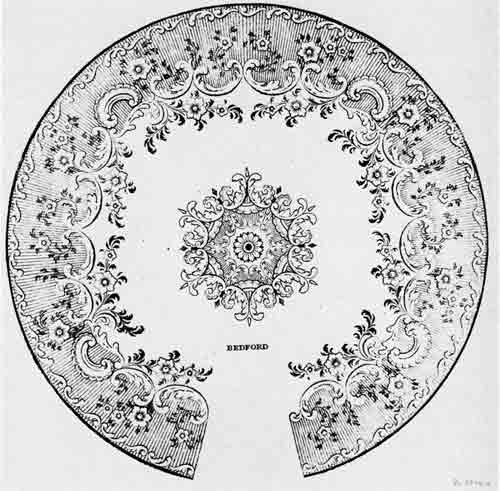
55 Bedford (ca. 1855—post-1865). Earliest pattern number is D340.
It also has a later D number, 3999.
|
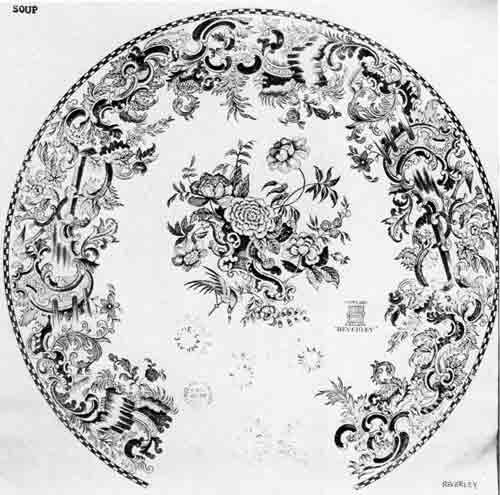
56 Beverley (ca. 1832—20th century). Earliest pattern number is
5136. Excavated examples were made by Copeland and Garrett, and W.T.
Copeland. Marks on the copper plate include a Copeland and Garrett mark
and a 20th-century mark.
|
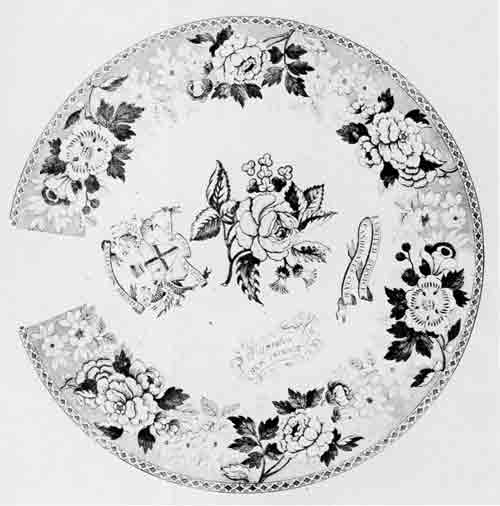
57 Blue Rose (ca. 1825—post-1833). Earliest pattern number is
4162. Excavated examples were made by Copeland and Garrett. A late
Spode mark (Whiter 1970: 226) is on the copper plate. In spite of its
name, it was manufactured in colours other than blue.
|
58—59 Botanical (ca. 1828—post-1836). Earliest
pattern numbers are 4565 and 6146. A slight variation was recorded later
as B522. Many more floral centres were made than are illustrated
here.
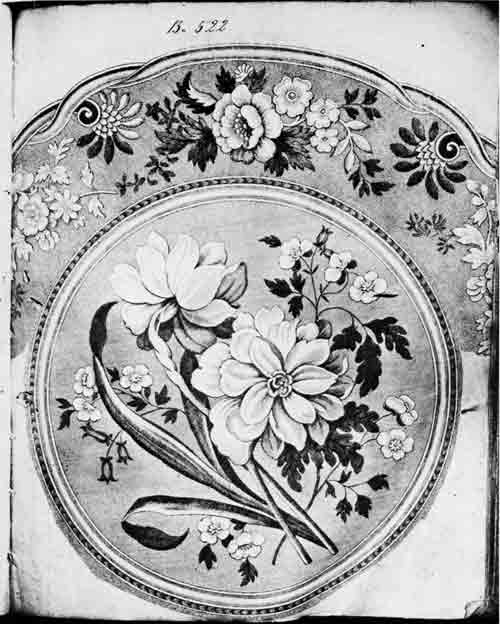
58 Botanical (from factory pattern book).
|
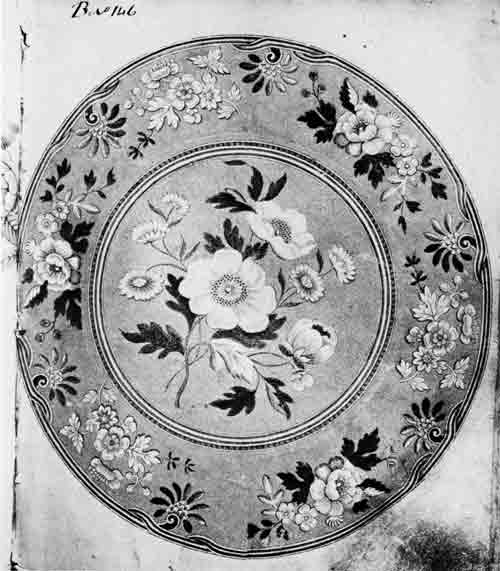
59 Botanical (from factory pattern book).
|
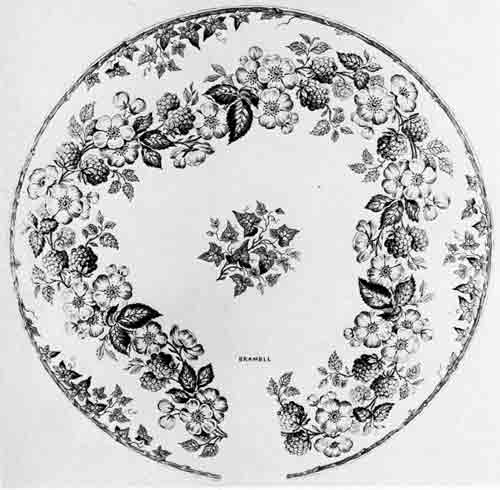
60 Bramble (post-1847—?). The centre is used with a different
border to create Ivy. Ivy has been found only with W.T. Copeland
marks.
|
61—62 British Flowers (ca. 1829—1974). Earliest pattern number
is 4749. Excavated examples were made by Copeland and Garrett, and W.T.
Copeland. Twentieth-century versions are Mayflower, Bouquet, Marina and
Royal Jasmine as well as British Flowers. Many more floral centres were
made than are illustrated here.
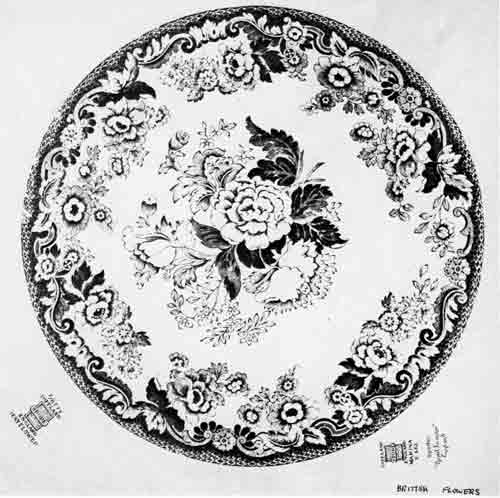
61 British Flowers.
|
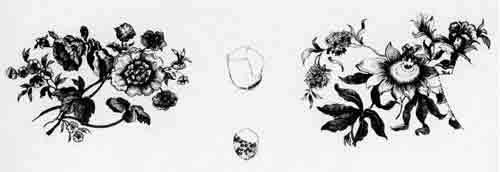
62 British Flowers centres. The two small centre drawings show the
remains of a chamberpot handle. (Drawing by I. Cameron.)
|
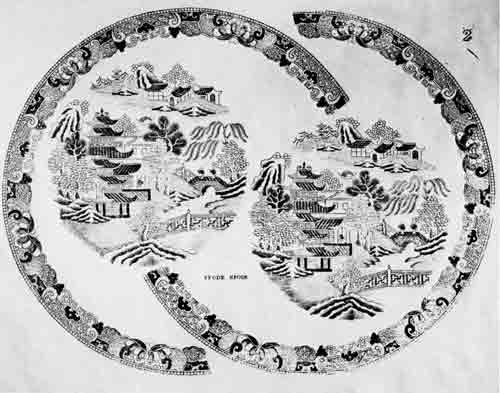
63 Broseley (ca. 1818—post-1847). Earliest pattern number is 2896
(Whiter 1970:150). Excavated examples were made by Spode, Copeland and
Garrett, and W.T. Copeland. This popular pattern was also made by other
manufacturers throughout the 19th century. Broseley is very similar to
another Spode pattern, Temple.
|

64 B700 (ca. 1838—post-1847). No pattern name. "B700" refers to
the earliest pattern number. All excavated examples were made by W.T.
Copeland. A Copeland and Garrett mark occurs on the copper plate.
|
65—66 B772 (ca. 1839—post-1882). No pattern name. "B772"
refers to the earliest pattern number. A Copeland and Garrett mark
occurs on one of the copper plates. All excavated examples were made by
W.T. Copeland. It seems to have been known by its number; a W.T.
Copeland saucer from Last Mountain House, Saskatchewan, is marked
"B.772" and the pattern appears with the title "B772" in the W.T.
Copeland and Sons' 1882 catalogue.
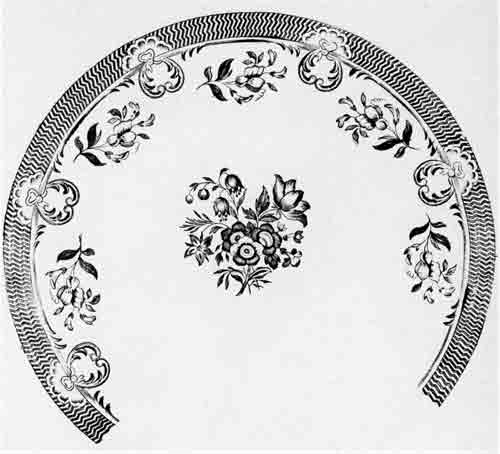
65 B772.
|
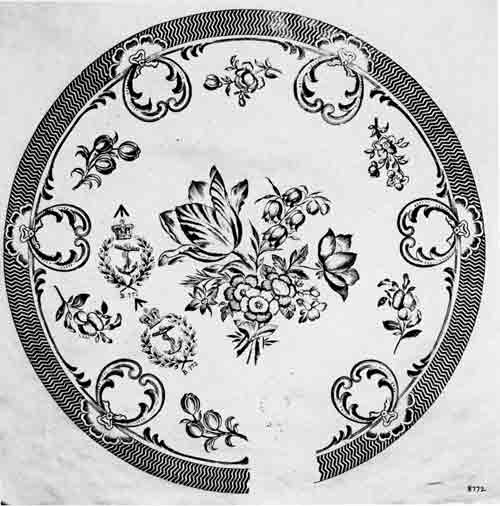
66 B772.
|
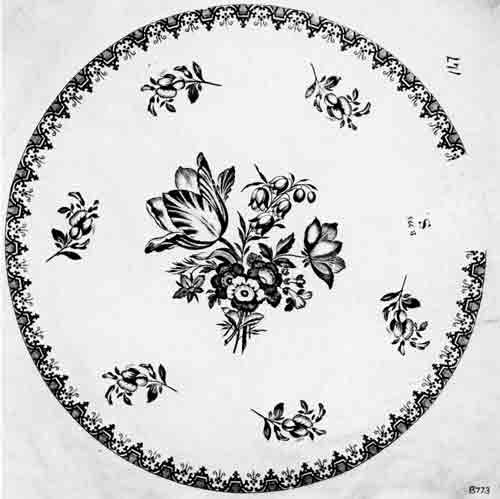
67 B773 (ca. 1839—post-1847). No pattern name. "B773"
refers to the earliest pattern number. It has been found on objects
made by Copeland and Garrett, and W.T. Copeland.
|
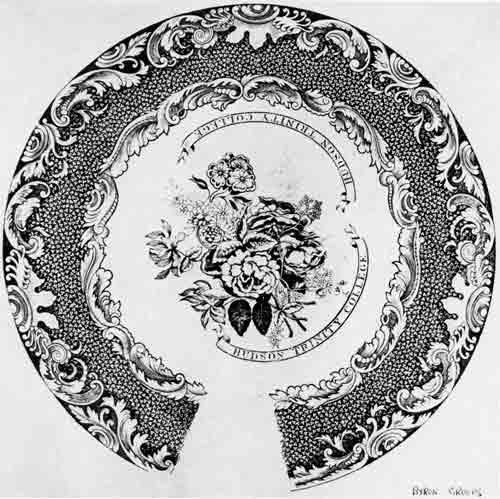
68 Byron Groups (post-1833—?). Introduced between 1833
and 1847 during the Copeland and Garrett period. All excavated examples
were made by Copeland and Garrett. It has the same border as Byron Views
and the same centres as Warwick Groups.
|
69—84 Byron Views (ca. 1833-68). The name refers to a series
of views engraved by Edward and William Finden and published by John
Murray in Finden's Landscape and Portrait Illustrations
to the Life and Works of Lord Byron. The first volume appeared in
1832 and two more volumes were brought out in the following years. Each
view is given title (Venice, Mount Olympus, etc.), but the correct name
is not invariably printed on the back of an object so identification of
a scene based on the mark alone is not advisable. The pattern was
introduced during the Copeland and Garrett period. In a factory pattern book
a note referring to this pattern states "The pattern and plates... are
destroyed commencing August 1868" (Copeland 1976b: 1296). Excavated
examples were made by Copeland and Garrett, and W.T. Copeland.
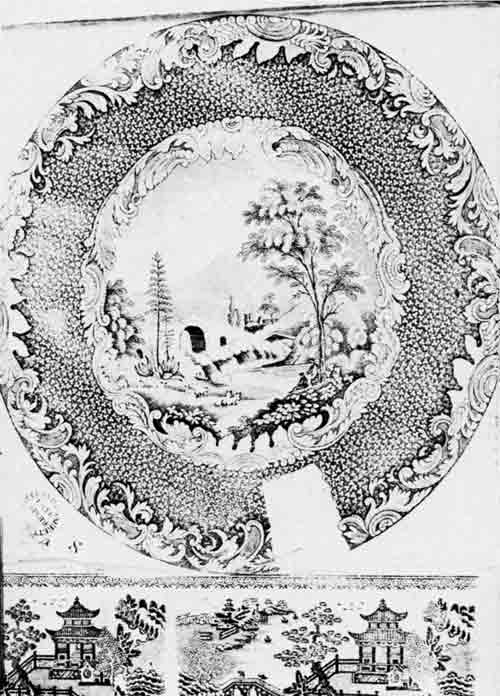
69 Byron Views: Etna (from factory pattern book). The unidentified
scene below is not part of the pattern.
|
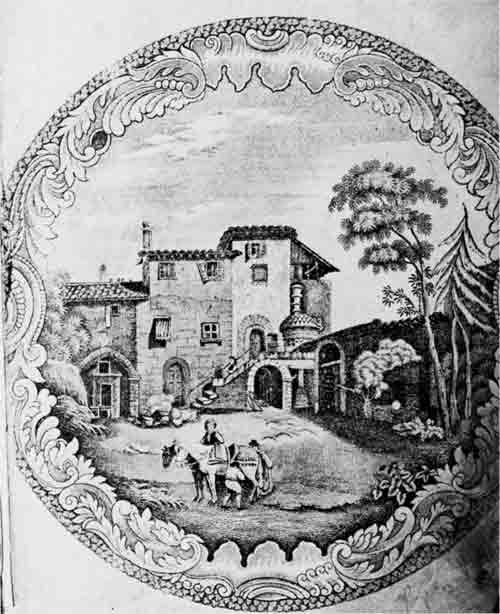
70 Byron Views: Franciscan Convent, Athens (from factory pattern
book).
|
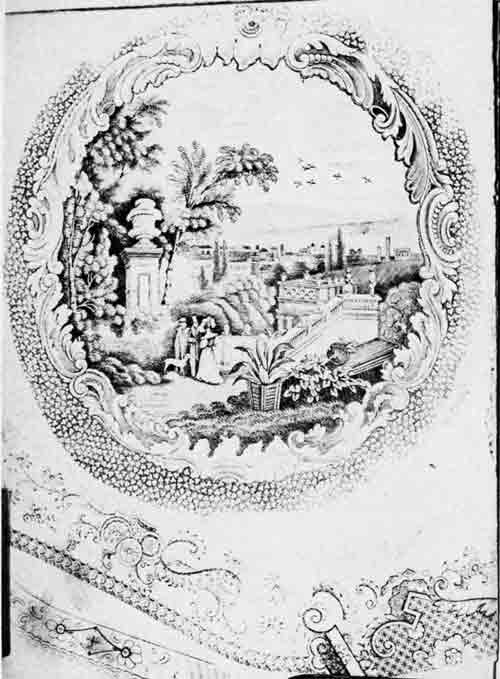
71 Byron Views: Bologna (from factory pattern book). The unidentified
designs below are not part of the pattern.
|
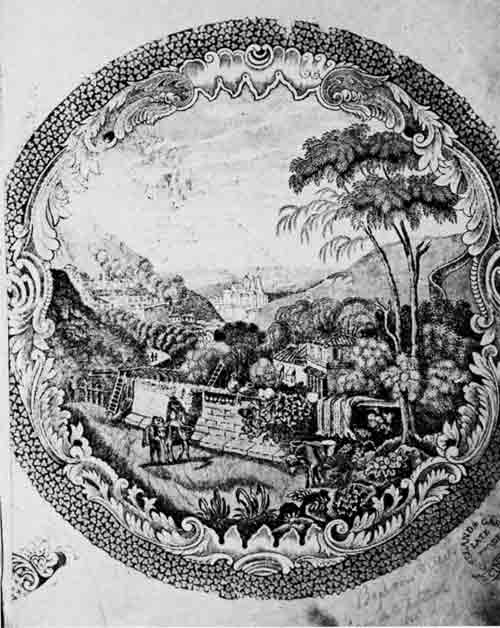
72 Byron Views: Cintra (from factory pattern book).
|
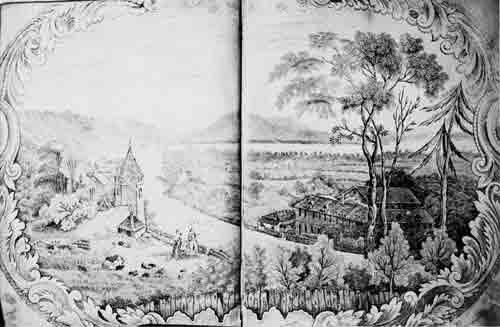
73 Byron Views: Thun (from factory pattern book).
|
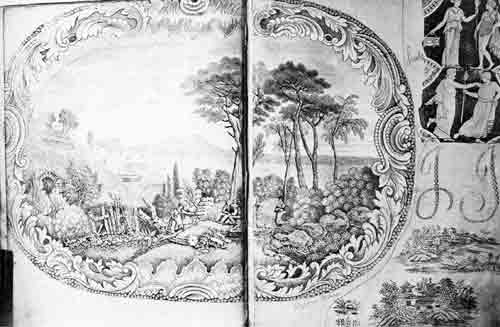
74 Byron Views: Bay of Naples (from factory pattern book). The designs
on the right are not part of the pattern.
|
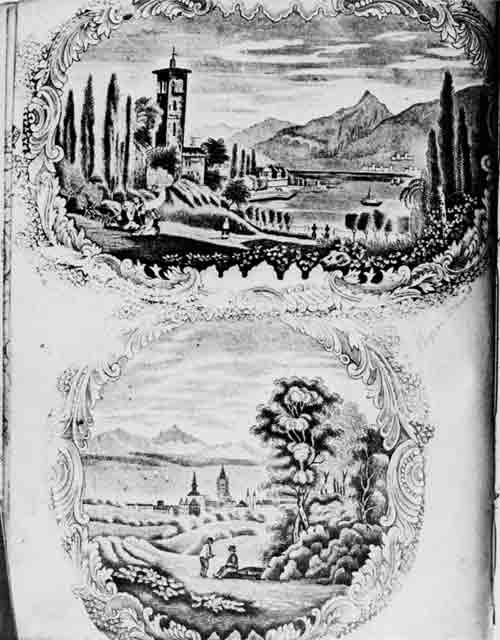
75 Byron Views: top, Bellagio, Lago di Como; bottom, Lausanne (from
factory pattern book).
|
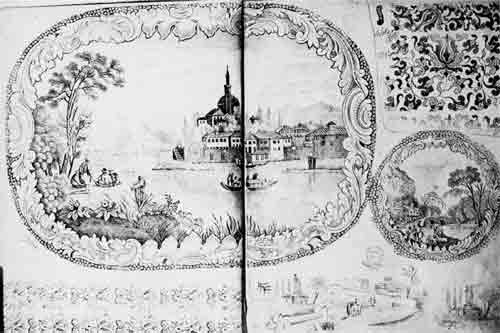
76 Byron Views: small round-bordered scene, unidentified;
rectangular-bordered scene, Yanina (from factory pattern book). Below
and slightly to the right of the rectangular-bordered scene is a small
scene with no border; this too is a scene of Yanina. The designs in the
upper right and bottom left are not part of the pattern.
|
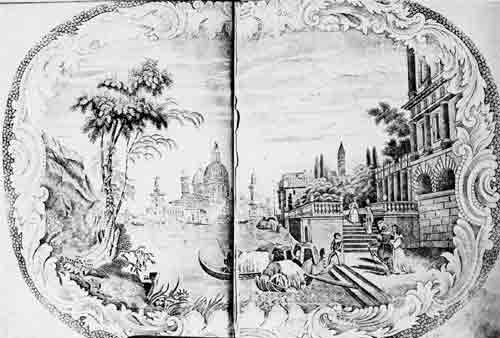
77 Byron Views: Venice (from factory pattern book).
|

78 Byron Views: top left, Lachin y Gair; top right, Rhodes; bottom left,
The Simplon (from factory pattern book). The Greek key is not part of
the pattern.
|
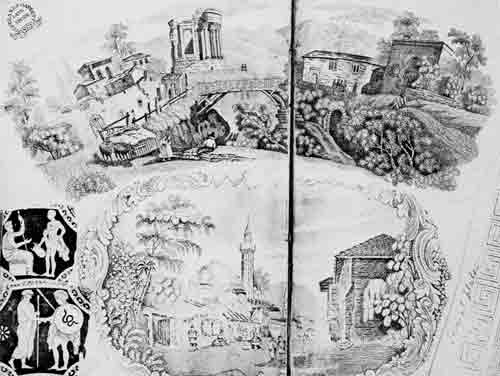
79 Byron Views: top, Tivoli; bottom, Patras (from factory pattern
book). The Greek designs are not part of the pattern.
|

80 Byron Views: The Tomb of Cecilia, Metella (from factory pattern
book). The Greek design is not part of the pattern.
|
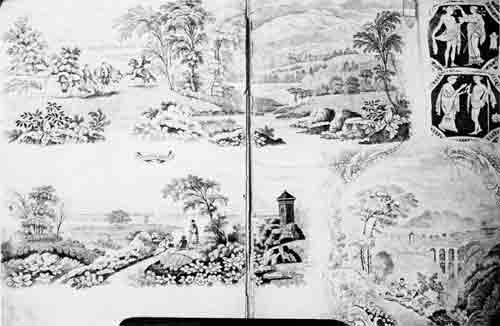
81 Byron Views: top, Mount Olympus; bottom left, Bay of Salamis; bottom
right, Socrate (from factory pattern book). The Greek designs in the
upper right are not part of the pattern.
|
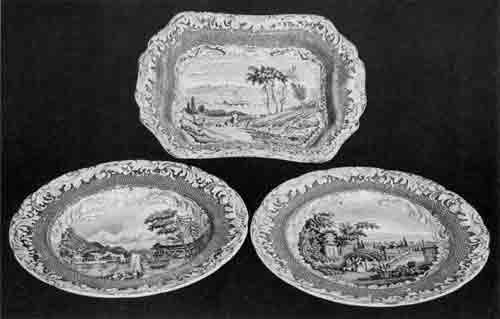
82 Byron Views. The scene on the vegetable dish at the top is The
Tiber. The scenes on the soup plate (left) and the dinner plate are
Interlachen and Bologna.
|
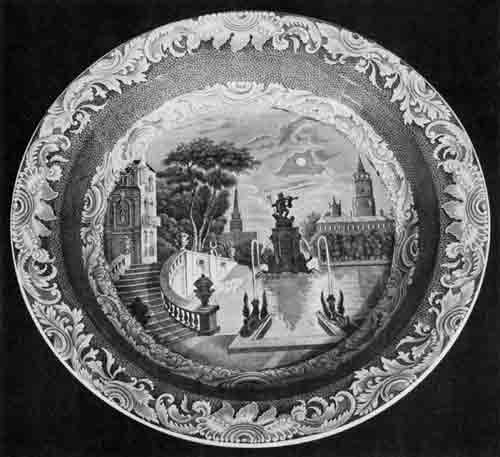
83 Byron Views: unidentified scene on a large round platter.
(Photo by P. van der Ham.)
|
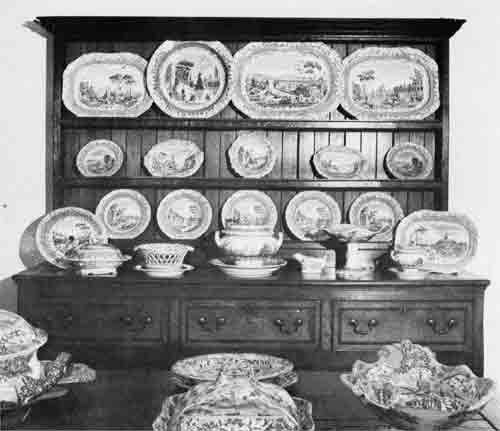
84 Representative pieces from a large Byron Views
dinner service. When patterns are composed of a series of views or
floral centres, it is customary for each different shape in a service to
bear a different central design.
|
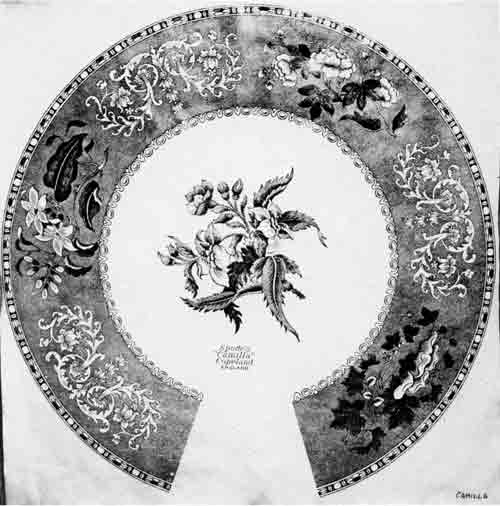
85 Camilla (ca. 1833—present) Earliest pattern number is
5419. Excavated examples were made by Copeland and Garrett, and W.T.
Copeland. It is still being manufactured by Spode Limited under this
name.
|
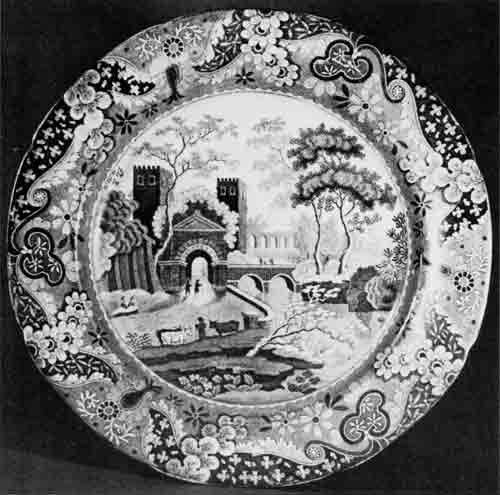
86 Castle (pre-1833—?). Excavated examples were made by Spode.
|
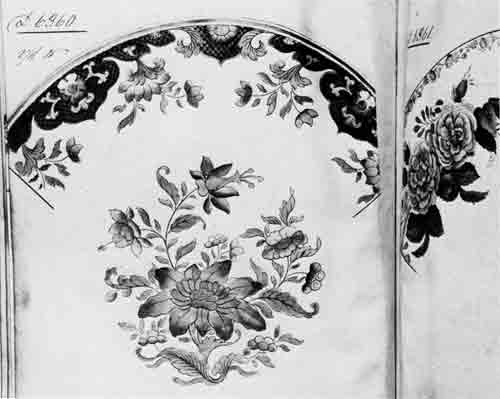
87 Ceylon (ca.1846—post-1869). Earliest pattern number is 8492.
Later it was given D number 6360. (Illustration from factory pattern
book). The pattern on the right-hand page is Rose Wreath.
|
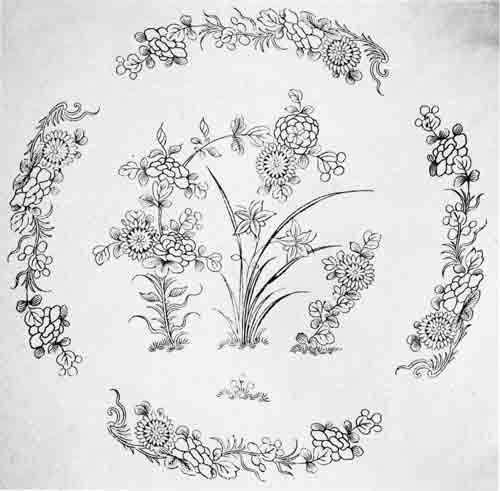
88 Chinese Flowers (ca. 1815—post-1847). Earliest pattern number is
2486. Excavated examples were made by Copeland and Garrett, and W.T.
Copeland.
|
89—94 Chinese Gardens (ca. 1834—pre-1879). Earliest pattern
number is B408. Copeland and Garrett marks occur on the copper plates. A
note "Engravings destroyed" occurs in a factory pattern book compiled
between 1868 and 1879. The dark splotches on several of the engravings
result from irregularities on the reverse sides of the copper plates.
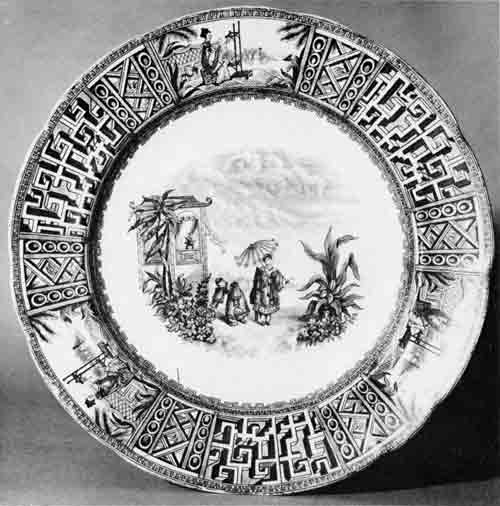
89 Chinese Gardens.
|
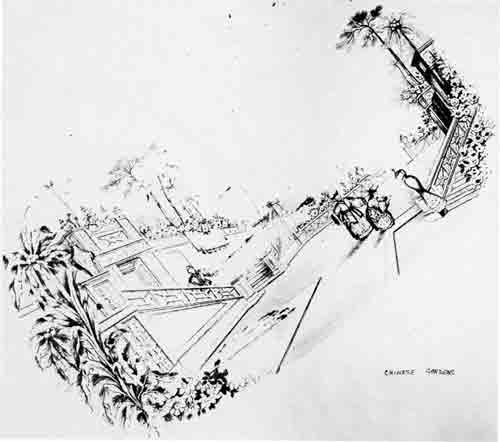
90 Chinese Gardens.
|
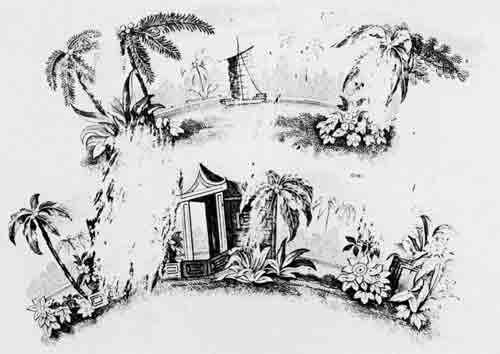
91 Chinese Gardens. Part of this engraving has been obliterated.
|
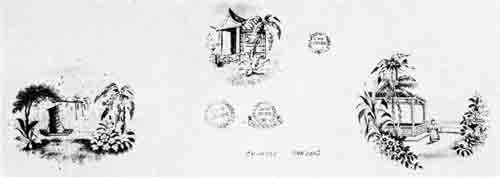
92 Chinese Gardens.
|
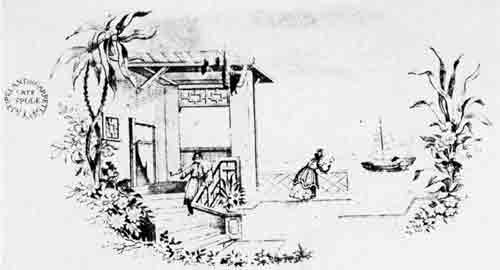
93 Chinese Gardens.
|
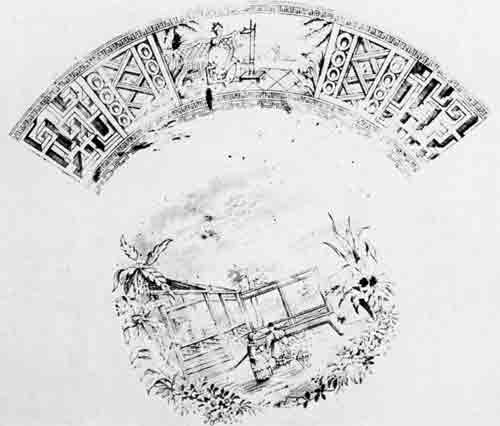
94 Chinese Gardens.
|
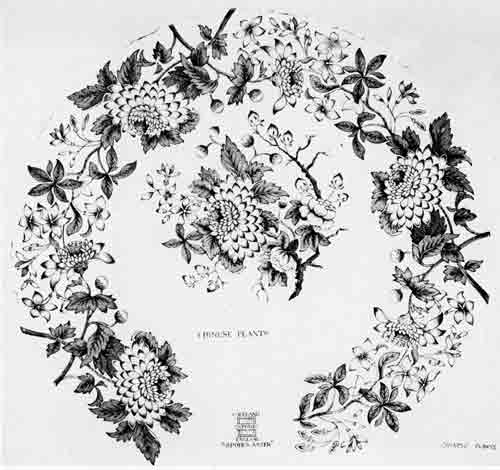
95 Chinese Plants (ca. 1932—present) Earliest pattern number is
5135. Excavated examples were made by Copeland and Garrett. A
20th-century mark occurs on the copper plate with the pattern's later
name, "Aster."
|
|

